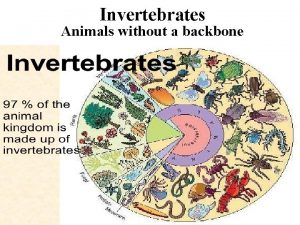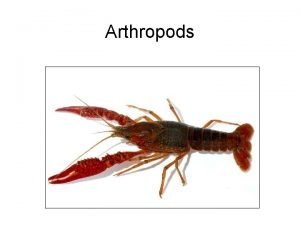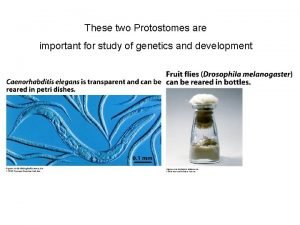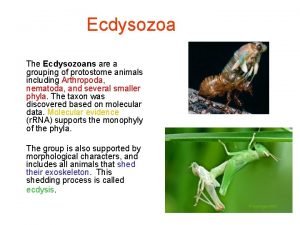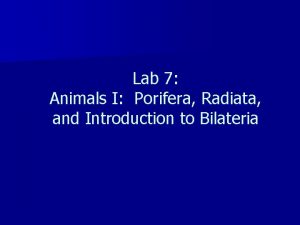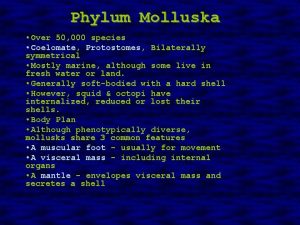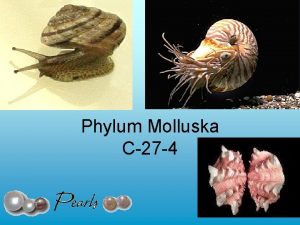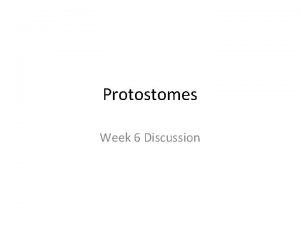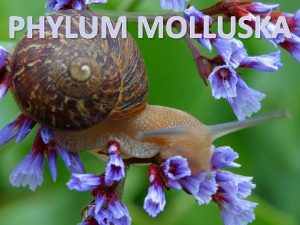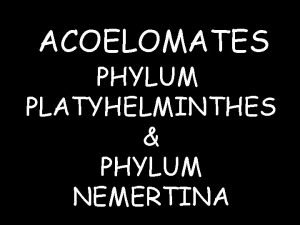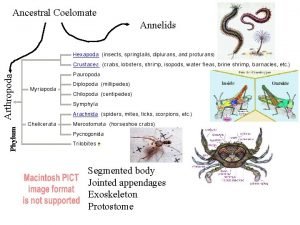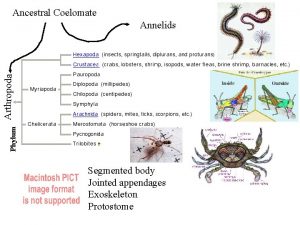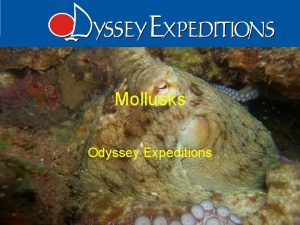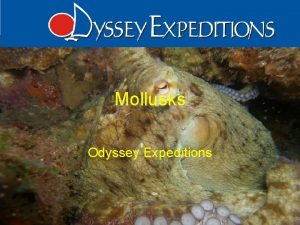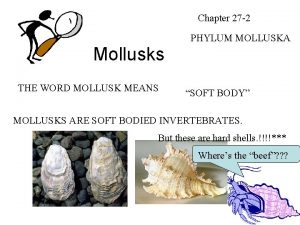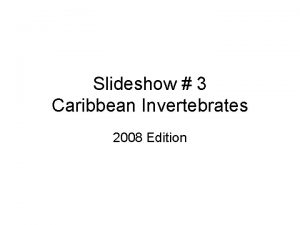Phylum Molluska Over 50 000 species Coelomate Protostomes

















- Slides: 17

Phylum Molluska • Over 50, 000 species • Coelomate, Protostomes, Bilaterally symmetrical • Mostly marine, although some live in fresh water or land. • Generally soft-bodied with a hard shell • However, squid & octopi have internalized, reduced or lost their shells. • Body Plan • Although phenotypically diverse, mollusks share 3 common features • A muscular foot - usually for movement • A visceral mass - including internal organs • A mantle - envelopes visceral mass and secretes a shell

Molusk General Anatomy

Class Polyplacophora (chitons) • Marine animals - shells divided into 8 plates • Move using a muscular foot and graze using a scraping mouthpart called a radula

Chiton Anatomy

Chitons

Class Bivalvia • Include clams, oysters and mussels • Have shells divided into 2 halves, connected by strong muscles • Has hatchet shaped foot for digging and anchoring • Are typically filter feeders drawing in water end expelling it through a siphon tube • Generally sessile, however, some species can quickly move by rapidly closing it's shell

Bivalve Anatomy

Bivalves

Class Gastropoda • Include snails, abalone, and slugs • Largest class of mollusks ~40, 000 species • Exhibit embryonic process of torsion • Visceral mass twists 1800 during development • Most species are herbivores, but some have modified radullas for boring into other mollusks • Some species have successfully colonized land

Gastropods

Giant African Land Snail

Class Cephalopoda • • • Unlike other mollusks, these are quick predators Have beak-like jaws and poison to catch & immobilize prey Beak is located @ the center of several long tentacles Foot has been modified to form a siphon which allows most species to move quickly using a jet of water. Only mollusks with a closed circulatory system (blood is always contained in vessels) Very highly developed nervous system Can learn complex behaviors Octopi have learned to open jars to retrieve prey May have rudimentary communication Cuttlefish and octopi may communicate by skin coloration

Cephalopod Anatomy

Octopus

Squid

Cuttlefish

Cambered Nautilus
 97 000 000 in scientific notation
97 000 000 in scientific notation Express 602200 in scientific notation.
Express 602200 in scientific notation. 7 500 000 000 000 000 000 in scientific notation
7 500 000 000 000 000 000 in scientific notation Porifiera
Porifiera 0,000 0,000 0,000
0,000 0,000 0,000 Symmetry of
Symmetry of Is arthropoda coelomate
Is arthropoda coelomate Acoelomate pseudocoelomate and coelomate
Acoelomate pseudocoelomate and coelomate Acoelomate
Acoelomate Diploblastic vs triploblastic
Diploblastic vs triploblastic Mountain lion keystone species
Mountain lion keystone species Protostomes are
Protostomes are Subphylum chelicerata
Subphylum chelicerata Deuterostomes vs protostomes
Deuterostomes vs protostomes Mastax
Mastax Protostome vs deuterostome
Protostome vs deuterostome Deuterostomes vs protostomes
Deuterostomes vs protostomes Lab 7 porifera cnidaria and protostomes
Lab 7 porifera cnidaria and protostomes



